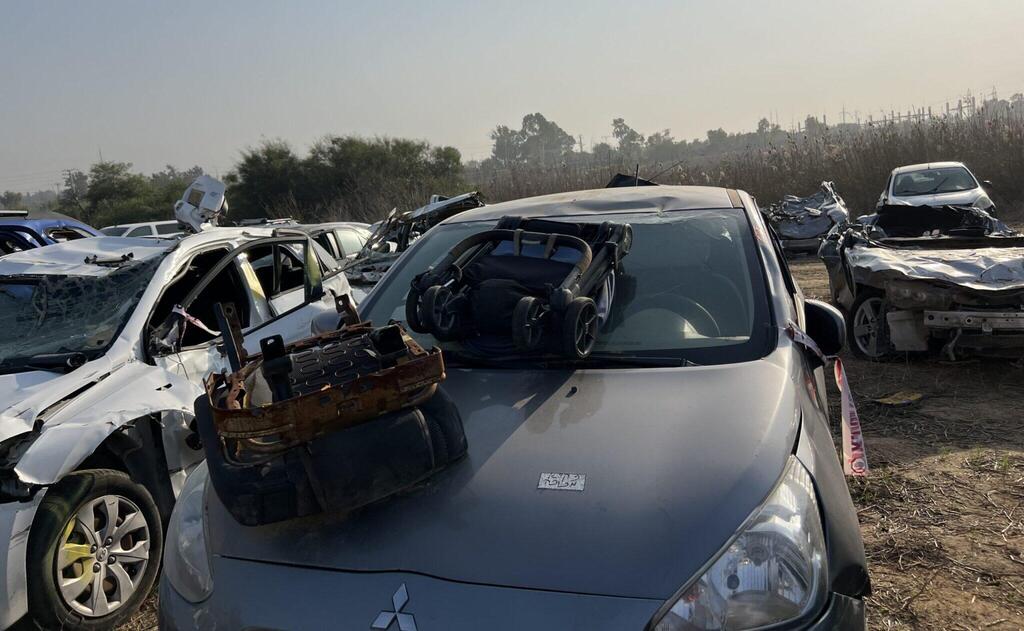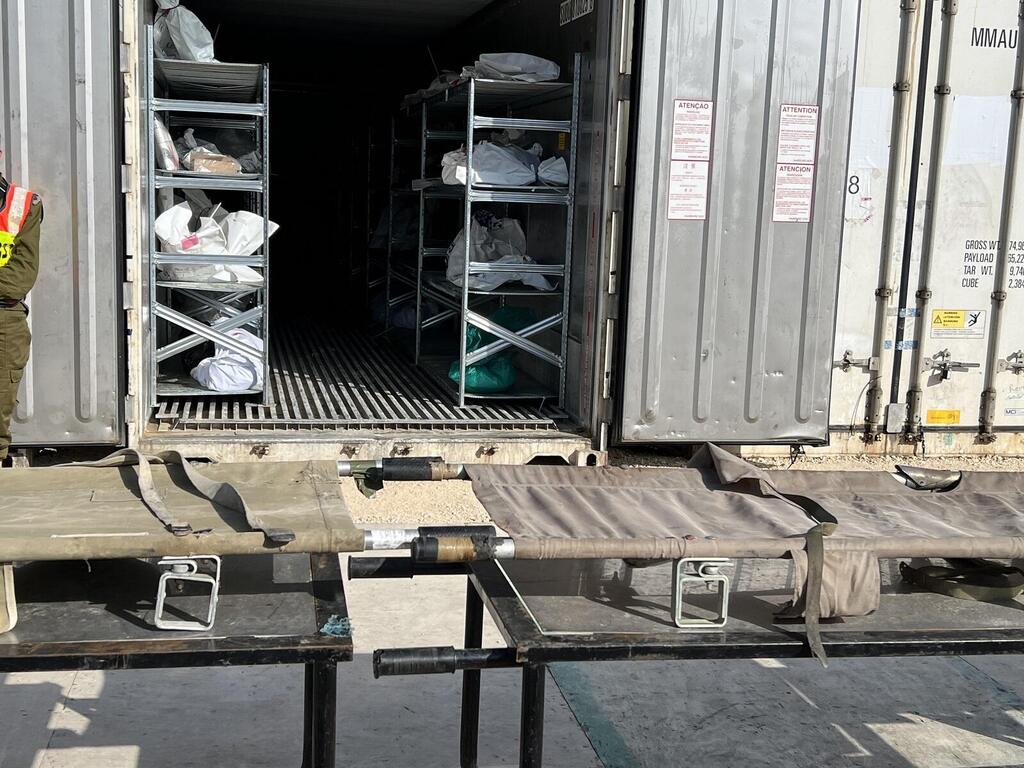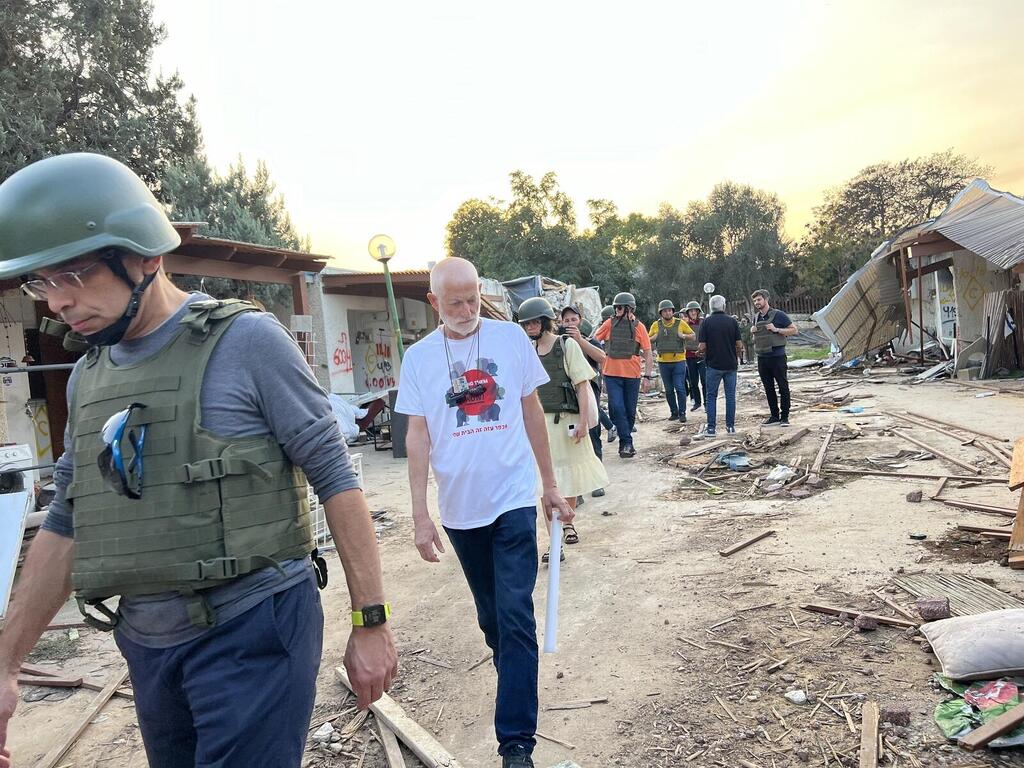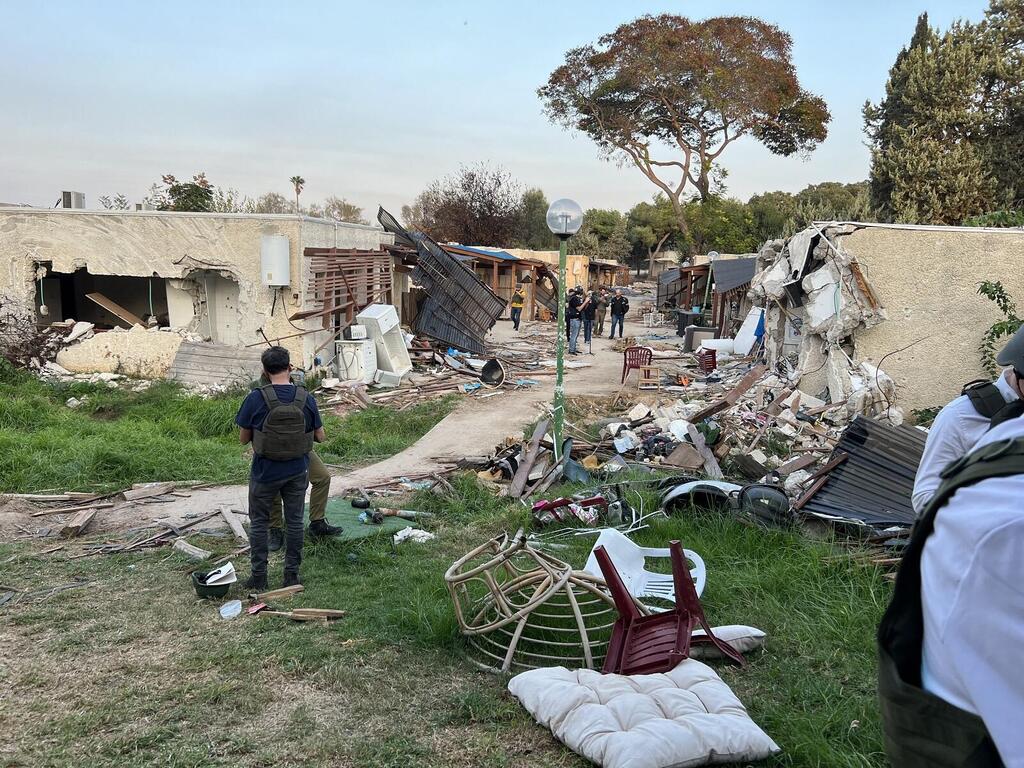It was a jam-packed day for many Croatian, German, Italian and Lithuanian parliamentarians who had never been to Israel, let alone during a war between Israel and Hamas.
They packed into small buses and drove to Israel’s southern border, along the way stopping at what has become the visual story sites that speak to the ghastly and sadistic slaughter that Hamas inflicted on innocent civilians on October 7.
More stories:
The first stop was a briefing by an Israel Defense Forces (IDF) officer before they were shown the wrapped body parts of victims at the military morgue on the Shura Army Base near Ramla, where there are still many unidentified body parts. Then, the politicians continued to the Sderot Observation Center, where they were shown a film taken by Hamas terrorists as they entered the city of Sderot and shot innocent civilians in cold blood.
They were briefed by Superintendent Micky Rosenfeld, the Israel Police’s spokesman to the foreign media, on the details and scope of the morning when Hamas invaded. He told the group that Sderot normally has more than 30,000 inhabitants, but now there are only 2,000 residents left in the city.
"They had a bigger plan"
Italian MP Mauro Del Barba, from Italia Viva, told The Media Line that he had a better understanding of the situation after the briefings that day. “Yes, I was very impressed by this witness. Because we didn’t know how many fighters came from the Gaza Strip… so many more than 1,000. And we didn’t realize that they had a bigger plan than the one we saw,” Del Barba said, adding, “and probably a plan to conquer the entire country and to provoke a big war.”
Rosenfeld said that the police and the Israeli government advised Sderot’s residents to leave the area because “it’s very, very dangerous.”
More than 125,000 residents have been taken to hotels or are in other areas of the country, and Rosenfeld said that he sees the war lasting many more months.
Stories one can’t imagine
The next stop on the tour was the car cemetery, which has become a monument of all the scorched, tangled, and shot-up cars that had lined the streets near the Re’im music festival. While there, a tow truck entered the lot with another car in tow that was about to be dropped off, many weeks after that horrific day.
A siren sounded as the group was visiting, and everyone took cover, running and bending to hide near a cement wall. The rocket could be seen easily; Sderot residents have lived with this reality of taking shelter on an almost daily basis.
Back on the bus, the final destination was what remained of the once-vibrant Kibbutz Kfar Aza. The blackened walls, remains of shattered lives, and the remnants of a community that thrived were seen as the group passed a lifeless orange tree whose fruits were barely holding on.
Israel Lander, who has lived on the kibbutz for 30 years, guided the tour group along with an IDF spokesman. Both detailed the events of October 7. He spoke of 63 inhabitants who were brutally murdered, stopping at various fragments of homes along the way.
His white cropped hair, beard, and shirt stood out among the darkness of the burned ruins around him. Printed on his shirt was the famous “Bring Them Home Now” red circle, and in Hebrew, below it, in black letters, “Kfar Aza is my home.” Lander’s solemn face and tortured eyes told stories one can’t imagine.
4 View gallery


The car cemetery, which has become a monument of scorched, tangled, and shot-up cars that had lined the streets near the Re’im music festival
(Felice Friedson/The Media Line)
Holed up and helpless in the shelter of their home on the morning of October 7, Lander and his wife could hear the Hamas terrorists shooting from the roof of their home, and from their living room at the young people who lived in homes lining both sides of the street directly facing theirs.
“We had luck; they left the handle of the door. But they stayed in my house. They made my house a war room,” Lander told the MPs.
With so much loss all around, it is interesting to note that none of the 36 members of Lander’s extended family on the kibbutz were themselves murdered or abducted on that terrible day.
In one home, that of Roy and Smadar Edan, they were shown a clothing closet where their two children, Michael and Amalya, ages 9 and 6, hid for the next 14 hours until help came. The terrorists killed their parents - their mother in the same room where they hid.
4 View gallery


Unidentified bodies and body parts remain at the military morgue on the Shura Army Base near Ramla, Israel
(Felice Friedson/The Media Line)
Their sister Abigail, then 3, hid with neighbors, who were ultimately taken hostage. On November 24, Abigail was among the hostages released.
The IDF spokesman pointed to the place, cut out of the mattress of the bed, where Smadar was murdered, and the bullet holes in the adjacent wall. The room was filled with shock.
This story is written by Keren Setton and reprinted with the permission of The Media Line




